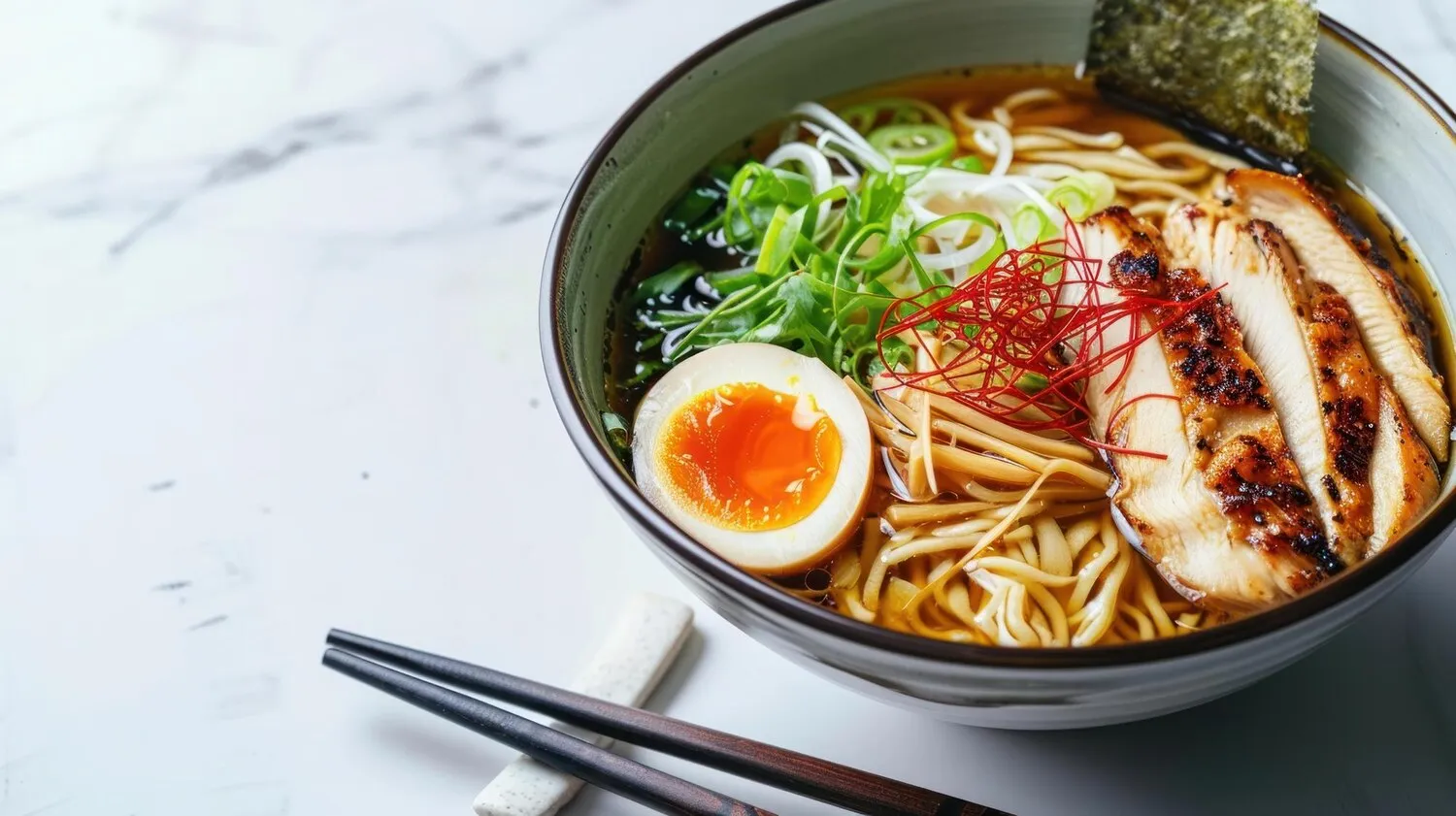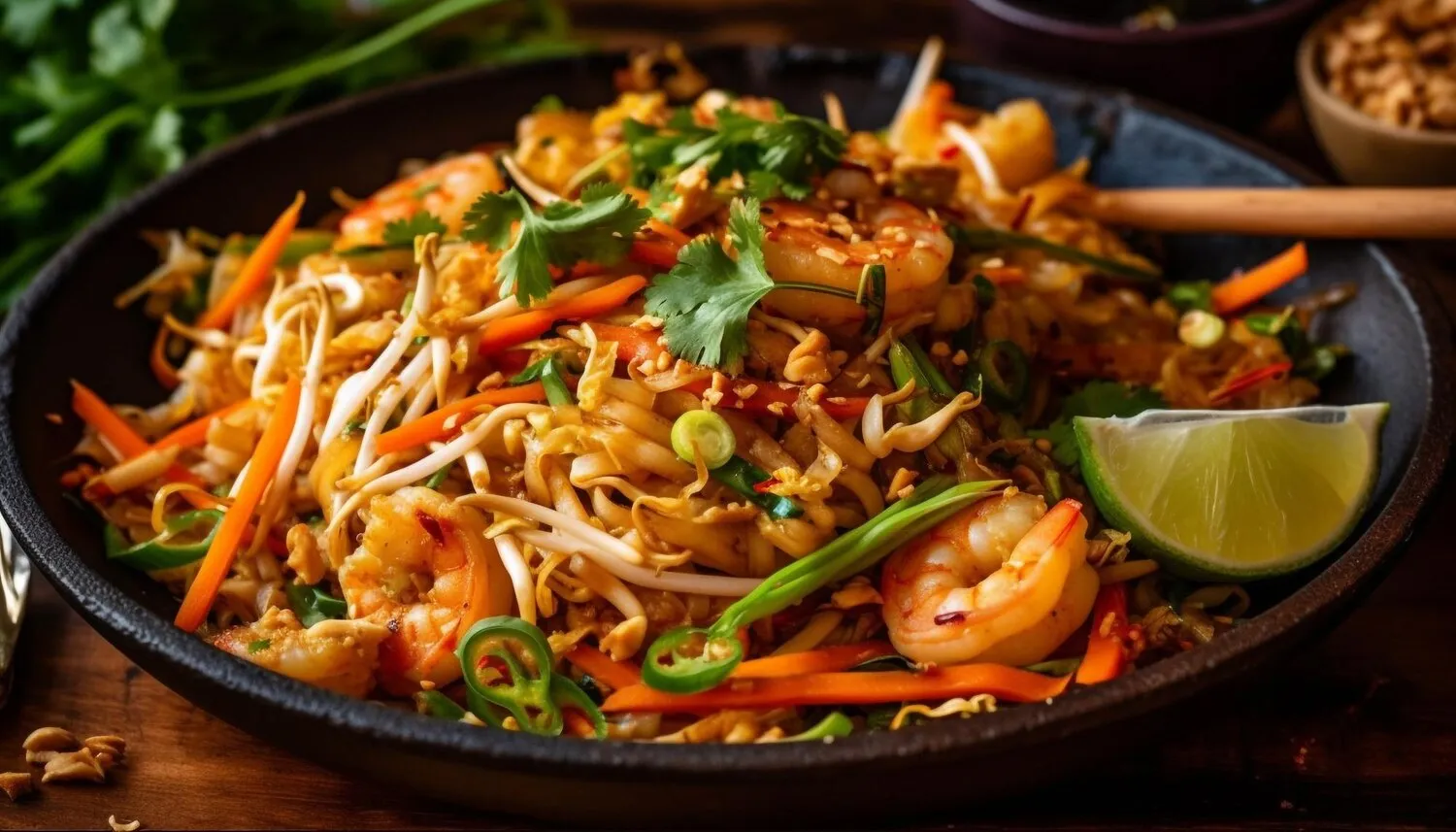
Ramen
Based on several online reviews and mentions, Ramen is a popular dish at Noodle Bar by Grissino. While specific variations aren't always detailed, ramen is often characterized by flavorful broth, noodles, and various toppings like meat, eggs, and vegetables.
Nutrition Facts
* The % Daily Value (DV) tells you how much a nutrient in a serving of food contributes to a daily diet. 2,000 calories a day is used for general nutrition advice.
Noodle Bar by Grissino
Ramen's origins are debated, with some tracing it back to Chinese noodle dishes. It gained popularity in Japan in the early 20th century and evolved into the diverse regional variations we know today, particularly after World War II.
Ramen is deeply embedded in Japanese culture, representing affordability, comfort food, and regional culinary identity.
Regional Variations
Each region in Japan boasts its own unique ramen style, with distinct broths, noodles, and toppings reflecting local ingredients and preferences. Examples include Hakata ramen (tonkotsu pork broth), Sapporo ramen (miso broth), and Tokyo ramen (soy sauce broth).
Ramen Shops (Ramen-ya)
Ramen-ya are ubiquitous throughout Japan, ranging from small, family-run establishments to large chains. They are a social gathering place where people can enjoy a quick and satisfying meal.
Slurping
Slurping ramen is considered polite in Japan, as it enhances the flavor and helps cool the noodles. It is a sign that you are enjoying the meal.
Ramen is characterized by its savory broth, wheat noodles, and a variety of toppings, creating a complex and umami-rich flavor profile.
The broth is the soul of ramen, often made from pork, chicken, fish, or vegetables, simmered for hours with ingredients like seaweed, mushrooms, and dried fish to extract deep flavors. Noodles are typically wheat-based and vary in thickness and texture. Toppings such as chashu (braised pork belly), seasoned soft-boiled eggs (ajitsuke tamago), nori seaweed, menma (fermented bamboo shoots), scallions, and narutomaki (fish cake) add layers of flavor and texture. Different regional varieties may feature unique ingredients like miso, soy sauce, or seafood.
Customize Your Order
Many ramen shops allow you to customize your order by specifying your preferred noodle firmness, broth richness, and topping selection.
Eat Quickly
Ramen is best enjoyed fresh and hot, so it's recommended to eat it quickly before the noodles become soggy.
Savor the Broth
The broth is the heart of ramen, so take the time to savor its complex flavors. Don't be afraid to drink directly from the bowl.
Explore additional Noodles dishes and restaurants
Explore NoodlesDiscover top dining spots and culinary experiences in Bolzano.
Explore BolzanoLearn more about the food culture, restaurant scene, and culinary heritage of Italy.
Explore Italy
